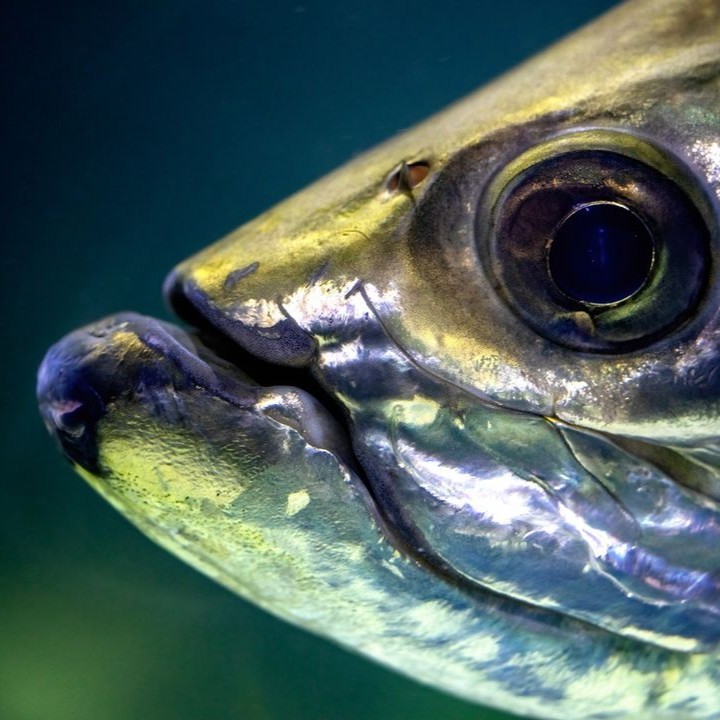Summary:
– The Chesapeake Bay Aquarium is home to a unique and fascinating tarpon.
– The tarpon has been a resident at the aquarium since 1987, attracting countless visitors.
– Tarpons are known for their incredible jumping abilities and silver coloration.
– Tarpons play a vital role in their ecosystems and have interesting reproductive behaviors.
– The Chesapeake Bay Aquarium actively promotes conservation and education about marine life.
Well, hello there! Have you ever heard of a tarpon? If not, get ready to be amazed by one of the most fascinating creatures that call our Chesapeake Bay Aquarium home. This particular tarpon has captured the hearts of countless visitors and has been a resident with us for over three decades. Let’s dive into the world of this amazing fish and discover some intriguing facts that will leave you wanting to learn more!
First, let’s talk about what makes this tarpon so special. Tarpons are known for their incredible jumping abilities, often leaping out of the water with impressive heights. It’s almost like they’re trying to touch the sky! Our tarpon certainly enjoys showing off its acrobatic skills to the awe-struck visitors. But that’s not the only thing that makes it stand out.
This tarpon has a mesmerizing silver coloration, shining brightly under the aquarium lights. Its scales perfectly adapt to its environment, allowing it to blend in and reflect light most dazzlingly. Watching this fish swim gracefully through the water is a true spectacle that captivates our guests.
Now, let’s delve into some interesting facts about tarpons in general. Did you know they can grow up to 8 feet long and weigh over 280 pounds?! That’s like having a small car swimming right in front of you. These magnificent creatures are truly giants of the sea. And what’s more, tarpons have a lifespan of up to 55 years! Talk about old age with style.
In addition to their size, tarpons also have some unique reproductive behaviors. Unlike most fish, tarpons are air-breathers. Their specialized swim bladder allows them to extract oxygen from the air, making them capable of surviving in low-oxygen environments. Isn’t that incredible? So not only can they jump high, but they can also breathe air like us humans!
But let’s not stop there. Tarpons play a crucial role in their ecosystems, too. They are considered apex predators, meaning they are at the top of their food chain. By regulating the populations of smaller fish and maintaining the balance in their habitats, tarpons contribute to the overall health and diversity of marine life. It’s like they’re the superheroes of the sea!
Speaking of conservation, our Chesapeake Bay Aquarium is more than just a home for this amazing tarpon. We actively promote education and awareness about marine life conservation. Through interactive displays, informational sessions, and hands-on experiences, we strive to inspire a love for nature and wildlife in our visitors. We believe that we can all contribute to its preservation by fostering a deeper understanding and appreciation for the natural world.
So, if you ever find yourself near our Chesapeake Bay Aquarium, stop by and say hello to our incredible tarpon. Witness its stunning jumps, admire its silver shine, and discover the wonders of the sea through a fun and educational visit. We promise it’ll be an experience you won’t forget!
In conclusion, the tarpon at our Chesapeake Bay Aquarium is truly a remarkable creature. From its jaw-dropping jumping abilities to its mesmerizing silver coloration, this fish never fails to leave a lasting impression. Tarpons are not only fascinating to observe, but they also play a vital role in maintaining the balance of their ecosystems. Through conservation efforts and educational initiatives, we hope to inspire others to appreciate and protect the incredible diversity of marine life. So why not dive into the world of tarpons and discover the wonders that await you?
*****
Source Description
Well, hello there. 👀 The tarpon in our Chesapeake Bay Aquarium has greeted more visitors than any other animal in our facility. It’s been a resident with us since 1987 – one year after we opened!


